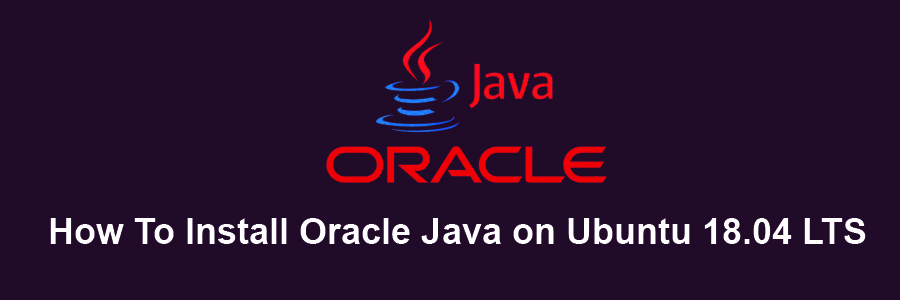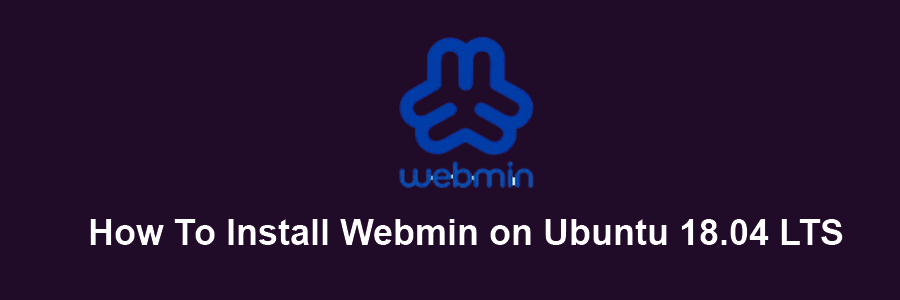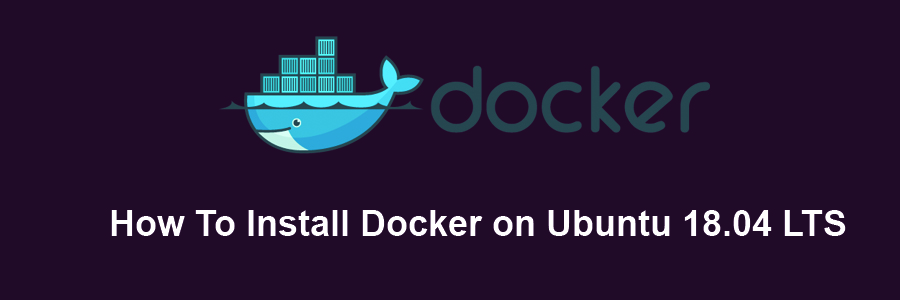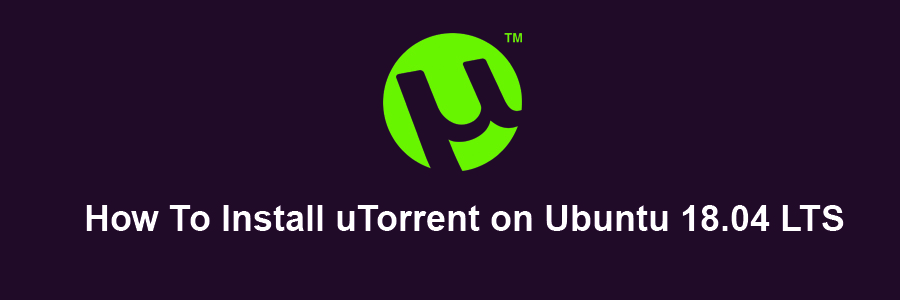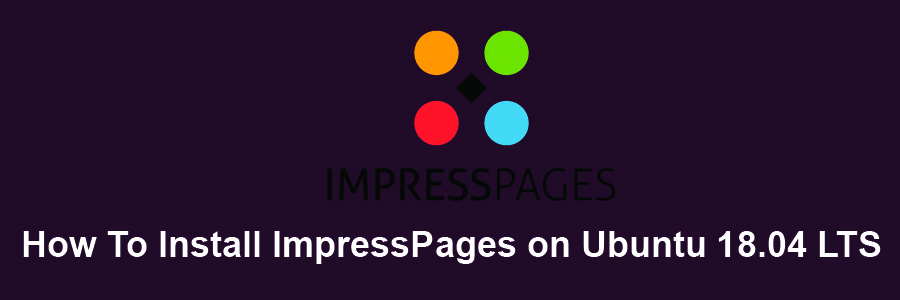Java is a programming language and computing platform. It was first released by Sun Microsystems in 1995. Many programs and scripts that require Java to run it, but usually Java are not installed by default on a VPS or Dedicated Server. Continue reading “How To Install Oracle Java 8 on Ubuntu 18.04 LTS”
How To Install Webmin (V1.900.tar.gz )on Ubuntu 18.04 LTS
Webmin is a free control Panel for managing VPS. Webmin is a web based interface which is used to manage VPS web hosting server. With the help of webmin you can setup user account, apache, dns and file sharing and other actions. Webmin very suitable for beginners who do not know much about the unix or linux command line. In this tutorial we will show you how to install Webmin on Ubuntu 18.04 LTS. Continue reading “How To Install Webmin (V1.900.tar.gz )on Ubuntu 18.04 LTS”
How To Install Docker on Ubuntu 18.04 LTS
Docker is an open-source project that automates the deployment of application inside the software container. The container allows the developer to package up all project resources such as libraries, dependencies, assets etc. Docker is written in Go Programming language and is developed by Dotcloud. It is basically a container engine which uses the Linux Kernel features like namespaces and control groups to create containers on top of an operating system and automates the application deployment on the container. Continue reading “How To Install Docker on Ubuntu 18.04 LTS”
How To Install uTorrent on Ubuntu 18.04 LTS
uTorrent is a freeware and a closed source BitTorrent Client. One of the most used lightweight BitTorrent Client, Now it is available for Linux as uTorrent server. The µTorrent is designed to use minimal computer resources while offering functionality comparable to larger BitTorrent clients such as Vuze or BitComet and also it provides performance, stability, and support for older hardware and versions of operating system. It is available for Microsoft Windows and Mac OS X. Continue reading “How To Install uTorrent on Ubuntu 18.04 LTS”
How To Install Laravel on Ubuntu 18.04 LTS
Laravel is a free, open-source PHP web application framework, created by Taylor Otwell and intended for the development of web applications following the model–view–controller (MVC) architectural pattern. It is a pretty new framework, but with a big potential to become one of the most popular PHP frameworks.
This article assumes you have at least basic knowledge of Linux, know how to use the shell, and most importantly, you host your site on your own VPS. The installation is quite simple and assumes you are running in the root account, if not you may need to add ‘sudo’ to the commands to get root privileges. I will show you through the step by step installation Laravel on Ubuntu 18.04 Bionic Beaver server.
Install Laravel on Ubuntu 18.04 LTS Bionic Beaver
Step 1. First, make sure that all your system packages are up-to-date
sudo apt-get update sudo apt-get upgrade
Step 2. Install LAMP (Linux, Apache, MariaDB, PHP) server.
A Ubuntu 18.04 LAMP server is required. If you do not have LAMP installed, you can follow our guide here. Also install all required PHP modules:
apt-get install php7.1-cli php7.1-gd php7.1-opcache php7.1-mysql php7.1-json php7.1-mcrypt php7.1-xml php7.1-curl
Step 3. Install Composer.
Install Composer which is the tool for dependency management in PHP:
curl -sS https://getcomposer.org/installer | sudo php
In this tutorial we will put the composer in our /usr/local/bin/ directory. We will also rename the composer name from composer.phar to composer. To do that type the following command:
mv composer.phar /usr/local/bin/composer
Give execute permission to the composer:
chmod +x /usr/local/bin/composer
Step 4. Installing Laravel on Ubuntu 18.04 LTS.
Download latest version of Laravel, Use below command to clone master repo of laravel from github, At the moment of writing this article it is version 5:
cd /var/www git clone https://github.com/laravel/laravel.git
After than move to the laravel code directory and use composer to install all dependencies required for Laravel framework:
cd /var/www/laravel composer install
This will take a while according to the network speed. After than set proper permissions on files:
chown -R www-data.www-data /var/www/laravel chmod -R 755 /var/www/laravel chmod -R 777 /var/www/laravel/app/storage
Now set the 32 bit long random number encrypption key, which used by the Illuminate encrypter service:
### php artisan key:generate Application key [Lf54qKbi3mwe463qR4NtYywgf9JdRGramona9qI] set successfully
Now edit config/app.php configuration file and update above generated application key as followings. Also make sure cipher is set properly:
y' => env('APP_KEY', 'Lf54qKbi3mwe463qR4NtYywgf9JdRGramona9qI'),
'cipher' => 'AES-256-CBC',
Step 5. Configuring Apache web server for Laravel.
Create a new virtual host directive in Apache. For example, create a new Apache configuration file named ‘laravel.conf’ on your virtual server:
sudo a2enmod rewrite sudo a2ensite laravel.conf touch /etc/apache2/sites-available/laravel.conf ln -s /etc/apache2/sites-available/laravel.conf /etc/apache2/sites-enabled/laravel.conf nano /etc/apache2/sites-available/laravel.conf
Add the following lines:
<VirtualHost *:80> ServerAdmin [email protected] DocumentRoot /var/www/laravel/public ServerName your-domain.com ServerAlias www.your-domain.com <Directory /var/www/laravel/public/> Options FollowSymLinks AllowOverride All Order allow,deny allow from all </Directory> ErrorLog /var/log/apache2/your-domain.com-error_log CustomLog /var/log/apache2/your-domain.com-access_log common </VirtualHost>
Now, we can restart Apache web server so that the changes take place:
systemctl restart apache2.service
Step 6. Accessing Laravel.
Laravel will be available on HTTP port 80 by default. Open your favorite browser and navigate to http://yourdomain.com or http://server-ip and complete the required the steps to finish the installation. If you are using a firewall, please open port 80 to enable access to the control panel.
Congratulation’s! You have successfully installed Laravel. Thanks for using this tutorial for installing Laravel in Ubuntu 18.04 LTS (Bionic Beaver) systems. For additional help or useful information, we recommend you to check the official Laravel web site.
How To Install GIMP Image Editor on Ubuntu 18.04 LTS
GIMP is a free and open-source image editor used for retouching and editing images. From retouching to restoring to creative composites, the only limit is your imagination. GIMP is used for producing icons, graphical design elements, and art for user interface components and mockups. GIMP provides top-notch color management features to ensure high-fidelity color reproduction across digital and printed media.
This article assumes you have at least basic knowledge of linux, know how to use the shell, and most importantly, you host your site on your own VPS. The installation is quite simple and assumes you are running in the root account, if not you may need to add ‘sudo’ to the commands to get root privileges. I will show you through the step by step installation GIMP image editor on a Ubuntu 16.04 (Bionic Beaver) server.
Install GIMP Image Editor on Ubuntu 18.04 LTS Bionic Beaver
Step 1. First make sure that all your system packages are up-to-date
sudo apt-get update sudo apt-get upgrade
Step 2. Installing GIMP on Ubuntu 18.04 LTS.
First, add an external apt repository in your system to install Gimp on Ubuntu system.
sudo add-apt-repository ppa:otto-kesselgulasch/gimp sudo apt-get update sudo apt-get install gimp
Once installed, open GIMP image editor from Ubuntu Dash or Terminal. Run “gimp” command in Terminal. (without quotes):
gimp
If you no longer need of Gimp and want to remove from your system, Use the following command to remove all Gimp application and associated data from your system.
apt-get autoremove gimp gimp-plugin-registry
Congratulation’s! You have successfully installed GIMP. Thanks for using this tutorial for installing GIMP image editor on Ubuntu 18.04 LTS (Bionic Beaver) system. For additional help or useful information, we recommend you to check the official GIMP web site.
How To Install ImpressPages on Ubuntu 18.04 LTS
ImpressPages is an open source Content Management System (CMS) with a built-in content editor written in PHP and using a popular open source MySQL/MariaDB database system for content storage. ImpressPages 5 is incredibly easy to learn and helps you create beautiful websites with quality content. In this tutorial we will show you how to install ImpressPages on Ubuntu 18.04 LTS.
This article assumes you have at least basic knowledge of Linux, know how to use the shell, and most importantly, you host your site on your own VPS. The installation is quite simple and assumes you are running in the root account, if not you may need to add ‘sudo’ to the commands to get root privileges. I will show you through the step by step installation Joomla on an Ubuntu 18.04 (Bionic Beaver) server.
Install ImpressPages on Ubuntu 18.04 LTS Bionic Beaver
Step 1. First make sure that all your system packages are up-to-date
sudo apt-get update sudo apt-get upgrade
Step 2. Install LAMP (Linux, Apache, MariaDB, PHP) server.
A Ubuntu 18.04 LAMP server is required. If you do not have LAMP installed, you can follow our guide here. Also install all required PHP modules:
apt-get install php7.1-cli php7.1-gd php7.1-opcache php7.1-mysql php7.1-json php7.1-mcrypt php7.1-xml php7.1-curl
Step 3. Installing ImpressPages on Ubuntu 18.04 LTS.
First thing to do is to go to ImpressPages’s download page and download the latest stable version of ImpressPages, At the moment of writing this article it is version 5.0.3:
wget http://download.impresspages.org/ImpressPages_5_0_3.zip unzip ImpressPages_5_0_3.zip mv ImpressPages /var/www/html/impress
We will need to change some folders permissions:
chown -R www-data:www-data /var/www/html/impress/ chmod -R 755 /var/www/html/impress/
Step 4. Configuring MariaDB for ImpressPages.
By default, MariaDB is not hardened. You can secure MariaDB using the mysql_secure_installation script. You should read and below each steps carefully which will set root password, remove anonymous users, disallow remote root login, and remove the test database and access to secure MariaDB.
mysql_secure_installation
Configure it like this:
- Set root password? [Y/n] y - Remove anonymous users? [Y/n] y - Disallow root login remotely? [Y/n] y - Remove test database and access to it? [Y/n] y - Reload privilege tables now? [Y/n] y
Next we will need to log in to the MariaDB console and create a database for the ImpressPages. Run the following command:
mysql -u root -p
This will prompt you for a password, so enter your MariaDB root password and hit Enter. Once you are logged in to your database server you need to create a database for ImpressPages installation:
MariaDB [(none)]> CREATE DATABASE impresspages; MariaDB [(none)]> GRANT ALL PRIVILEGES ON impresspages.* TO 'impressuser'@'localhost' IDENTIFIED BY 'your-password'; MariaDB [(none)]> FLUSH PRIVILEGES; MariaDB [(none)]> \q
Step 5. Configuring Apache web server for ImpressPages.
Create a new virtual host directive in Apache. For example, create a new Apache configuration file named ‘impresspages.conf’ on your virtual server:
sudo a2enmod rewrite touch /etc/apache2/sites-available/impresspages.conf ln -s /etc/apache2/sites-available/impresspages.conf /etc/apache2/sites-enabled/impresspages.conf nano /etc/apache2/sites-available/impresspages.conf
Add the following lines:
<VirtualHost *:80> ServerAdmin [email protected] DocumentRoot /var/www/html/impress ServerName your-domain.com ServerAlias www.your-domain.com <Directory /var/www/html/impress/> Options FollowSymLinks AllowOverride All Order allow,deny allow from all </Directory> ErrorLog /var/log/apache2/your-domain.com-error_log CustomLog /var/log/apache2/your-domain.com-access_log common </VirtualHost>
Now, we can restart Apache web server so that the changes take place:
systemctl restart apache2.service
Step 6. Accessing ImpressPages.
ImpressPages will be available on HTTP port 80 by default. Open your favorite browser and navigate to http://yourdomain.com/ or http://server-ip and complete the required the steps to finish the installation. If you are using a firewall, please open port 80 to enable access to the control panel.
Congratulation’s! You have successfully installed ImpressPages. Thanks for using this tutorial for installing ImpressPages CMS (content management system) on Ubuntu 18.04 LTS systems. For additional help or useful information, we recommend you to check the official ImpressPages web site.
